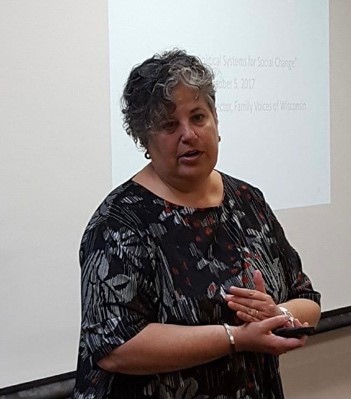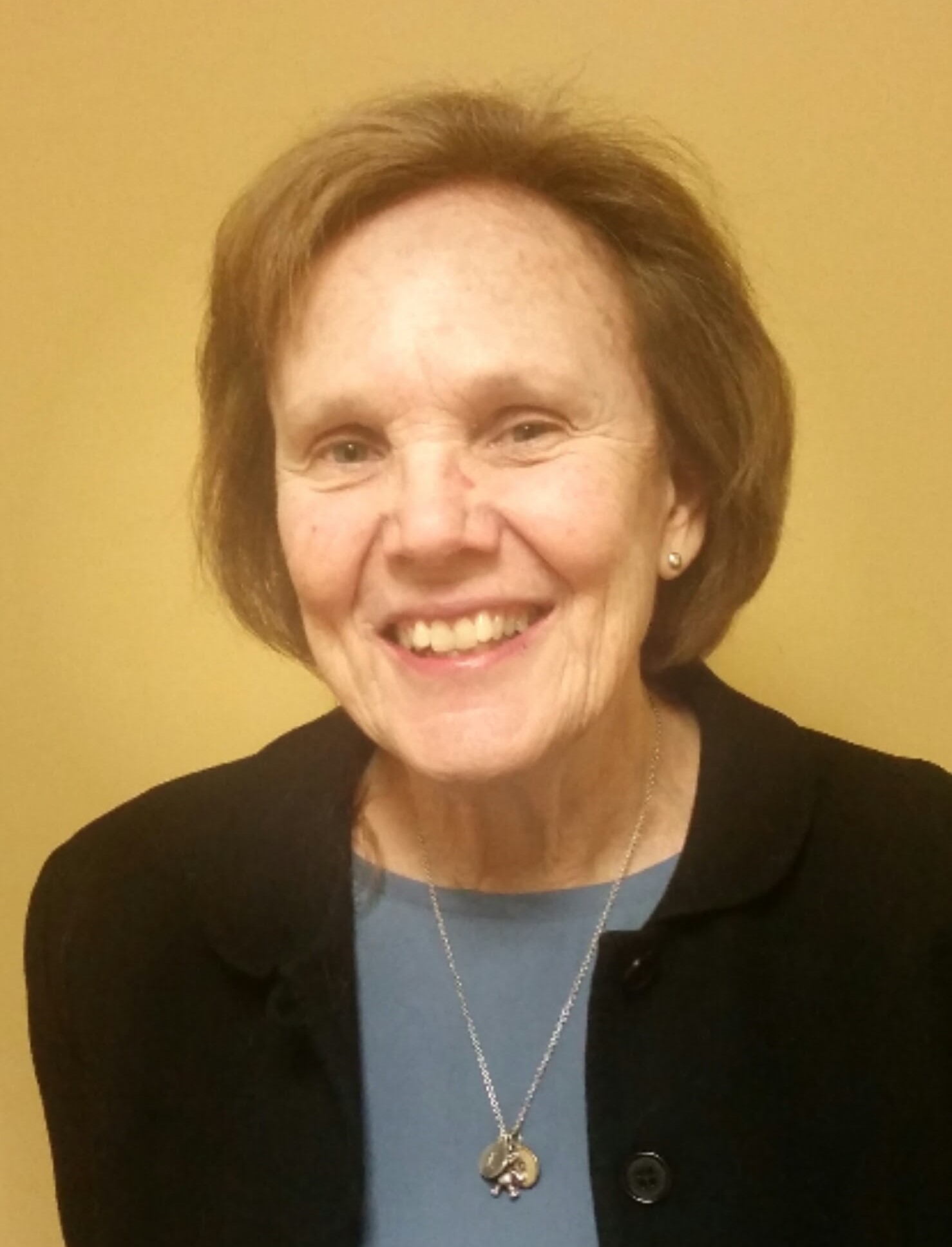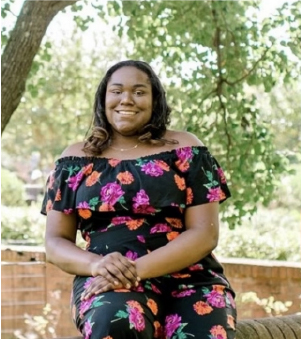F2F Funding Opportunity for June 1, 2022 – May 31, 2027
Information and Resources
The Health Resources & Services Administration (HRSA), Maternal and Child Health Bureau (MCHB), has released a Notice of Funding Opportunity for Family-to-Family Health Information Centers (F2Fs) for the period June 1, 2022 through May 31, 2027 (5 years). You can find the opportunity and related information here on grants.gov.
The HRSA Application Guide contains information on required fonts and font sizes for narrative and for tables, charts, graphs, and budget charts:
Times Roman, Arial, Courier, or CG Times. The text and table portions of the application must be single-spaced and submitted in not less than a 12-point font. Applications not adhering to 12-point font requirements may be deemed non-responsive and returned. For charts/graphs, footnotes, and budget tables, you may use a different pitch or size font but not less than 10-point or size font.
Don’t forget to check your SAM registration and make sure everything is accurate and up to date.
While Letters of Support are suggested they are not required. If page limit is an issue we strongly suggest you forego all letters except from your Title V agency.
Following is a collection of resources that may be helpful for applicants.
Resources from HRSA: F2F HIC NOFO Technical Assistance
View recorded HRSA webinar
FAQ: Family-to-Family Health Information Centers
Tips for Writing & Submitting Good Grant Proposals
Recorded Webinars from Family Voices
Resources for F2F Proposals: Equity Plan
The recorded webinar and accompanying slide deck below are a walk-through of resources for creating the equity plan required in the F2F NOFO. Diana Autin provides a review of the disparity impact statement format, how to do a language access self-assessment, and how to use data from the American Community Survey.
View/Download Slides from the Resources for F2F Proposals webinar
Evaluation TA for F2F Proposals
LFPP’s external evaluators at the Institute for Community Health (ICH) provide a brief overview on general program evaluation practices in this presentation (~30min).
Watch the recording of the Evaluation TA webinar
Collaboration and Partnerships
Grant Writing Prep – Tips for Securing Collaboration Commitments and Introduction to Logic Models
This recorded resource focuses on 2 topics relevant to those writing grant applications, particularly for Family-to-Family Health Information Center funding opportunities: Diana Autin from SPAN (NJ F2F and FV SAO) shares information on strategies and forms that SPAN has used to secure collaboration commitments from state partners; Carrie Fisher, a member of the NCFPP external evaluation team (Institute for Community Health), gives a brief introduction to logic models and ways to approach them.
Partnership and Collaboration Webinar
Watch recorded video (~16 min)
Family/Professional Partnerships Information Sheet
View/Download the Information Sheet
Equity Assessment & Planning
CDC Social Vulnerability Index
Explore the CDC/ATSDR’s Social Vulnerability Index (SVI)
The CDC/ATSDR Social Vulnerability Index (CDC/ATSDR SVI) uses 15 U.S. census variables to help identify communities with significant social vulnerability.
Disparities Impact Statement
Disparities Impact Statement (CMS.gov)
This tool can be used by all health care stakeholders to achieve health equity for racial and ethnic minorities, people with disabilities, sexual and gender minorities, individuals with limited English proficiency, and rural populations. This worksheet has 5 steps: (1) Identify health disparities and priority populations; (2) Define your goals; (3) Establish your organization’s health equity strategy; (4) Determine what your organization needs to implement its strategy; and (5) Monitor and evaluate your progress.
Cultural and Linguistic Competence Self-Assessment and Guide for Family Organizations
Access the Guide
The National Center for Cultural Competence developed this self-assessment for family organizations in collaboration with a number of family organizations including Family to Family Health Information Centers, Statewide Family Networks, and Parent to Parent programs.
A Practical Guide to Implementing the CLAS Standards
Access the guide at CMS.gov
The purpose of this toolkit is to enable organizations to implement the National CLAS Standards and improve health equity. It is organized according to the enhanced National CLAS Standards, and provides practical tools and examples of CLAS, in addition to efforts to implement the National CLAS Standards that can be adapted for use by health care organizations.
Language Access Self-Assessment and Planning Tool
The www.lep.gov web site has census data that may provide important data to help illustrate your population when writing the diversity plan (see page 9 of the NOFO).
- See the data language tab at lep.gov/maps
- FAQs on Commonly Asked Questions
- Language Access Planning
- Language Access Assessment and Planning Tool for Federally Conducted and Federally Assisted Programs (F2Fs are “federally assisted” because F2Fs receive federal financial assistance via grants)
- CMS Guide to Developing a Language Access Plan
- Video: Know Your Language Population with the Language Map App
- Video: Breaking Down the Barriers: Translating Limited English Proficiency Policy Into Practice at
- Video: Understanding and Abiding by Title VI of the 1964 Civil Rights Act
Working with Un/Underserved Families
Growing your Capacity to Engage with Diverse Communities by Working with Community Liaisons and Cultural Brokers
View/Download ‘Growing Your Capacity to Engage with Diverse Communities…’
The purpose of this booklet is to provide information about one approach to family and community engagement – working with community liaisons and cultural brokers. This booklet is grounded in the knowledge and experiences of the Family Voices network and family leaders around the country who have shared what they have learned in their efforts to serve the full range of families of children and youth with special health care needs and/or disabilities.
National Culturally and Linguistically Appropriate Services Standards (CLAS)
Go to thinkculturalhealth.hhs.gov
The National CLAS Standards are intended to advance health equity, improve quality, and help eliminate health care disparities by establishing a blueprint for health and health care organizations. The principal standard is to provide effective, equitable, understandable, and respectful quality care and services that are responsive to diverse cultural health beliefs and practices, preferred languages, health literacy, and other communication needs.
Logic Models
Centers for Disease Control and Prevention
Resources on logic models at CDC.gov
The Community Toolbox
Excellent resources on developing a logic model or theory of change
The University of Wisconsin-Madison Program Development and Evaluation Division of Extension
Clear and understandable resources on logic models, including exemplars, templates, training guides, and even online courses
Grant Writing Prep – Tips for Securing Collaboration Commitments and Introduction to Logic Models
View the recording, presentation, and materials
This recorded resource focuses on 2 topics relevant to those writing grant applications, particularly for Family-to-Family Health Information Center funding opportunities: Diana Autin from SPAN (NJ F2F and FV SAO) shares information on strategies and forms that SPAN has used to secure collaboration commitments from state partners; Carrie Fisher, a member of the NCFPP external evaluation team (Institute for Community Health), gives a brief introduction to logic models and ways to approach them.
Other Resources
Family Engagement in Systems Assessment Tool (FESAT) and Toolkit
Find the Tool
- Methodology section: The methodology section must identify meaningful support and collaboration with key stakeholders (including families from diverse cultural, racial, linguistic, and geographic backgrounds) in planning, designing, and implementing all activities including development of the proposal and in ongoing needs assessment. The FES Toolkit contains excellent resources on strategies to effectively and meaningfully engage diverse families in all aspects of the project.
- Evaluation section: The evaluation section must present an evaluation plan that contains: (1) strategies to identify/use appropriate data sources, collect and analyze data that will measure outcomes/impact of the project; (2) strategies to collect, analyze, and track data to measure outcomes/impact as it relates to different socio-cultural groups (e.g., race, ethnicity, language); (3) mechanisms to monitor and evaluate the efficiency of the proposed project activities/process; and (4) an explanation of how the data will be used to inform and improve the quality of program development and service delivery. It must describe any data collection tools to be used (e.g., surveys, database) and key elements of those tools that will be used in the evaluation strategy. The FESAT is an excellent tool to evaluate the effectiveness of F2Fs in measuring the effectiveness of projects in meaningfully engaging diverse families in planning, designing, and implementing all activities and in ongoing needs assessment.
Data Source: Title V Information System (TVIS)
Explore TVIS data online
Title V Information System (TVIS) is an online site that provides data from State & Territorial Title V Maternal and Child Health programs:
- Block Grant Applications/ Annual Reports
- Five-year Needs Assessments
- Financial, program and performance/indicator data
- State-by-state, regional, and national composite data
F2F Performance Reporting
Watch recorded video (~15 min)
National Survey of Children’s Health
Access the national survey of children’s health data
The National Survey of Children’s Health (NSCH) provides rich data on multiple, intersecting aspects of children’s lives—including physical and mental health, access to quality health care, and the child’s family, neighborhood, school, and social context. The National Survey of Children’s Health is funded and directed by the Health Resources and Services Administration (HRSA) Maternal and Child Health Bureau (MCHB). A revised version of the survey was conducted as a mail and web-based survey by the Census Bureau in 2016, 2017, 2018, 2019 and 2020. Among other changes, the 2016 National Survey of Children’s Health started integrating two surveys: the previous NSCH and the National Survey of Children with Special Health Care Needs (NS-CSHCN). See the MCHB website for more information on the 2016, 2017, 2018, 2019 and 2020 National Survey of Children’s Health administration, methodology, survey content, and data availability.



















